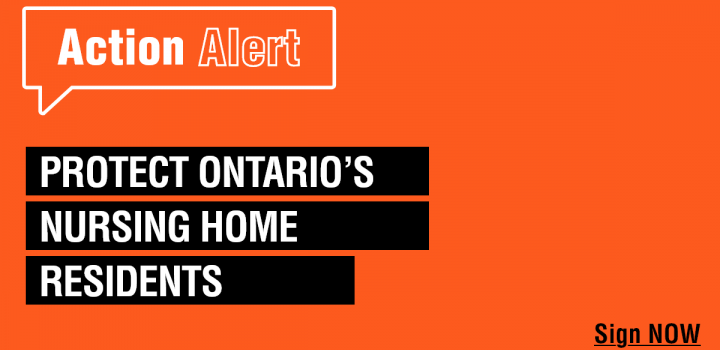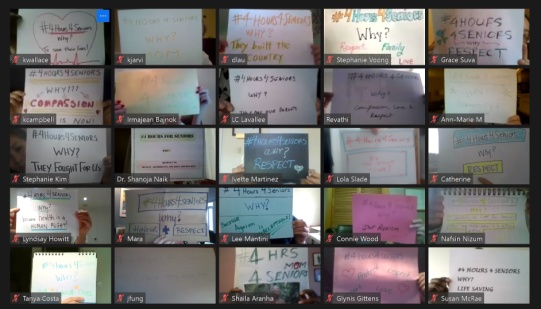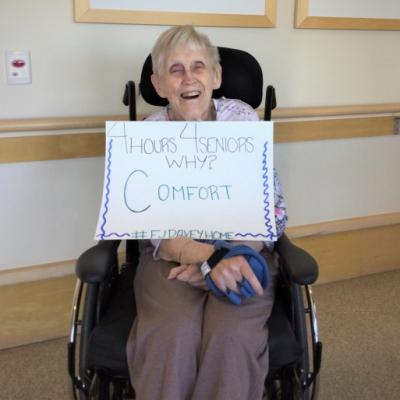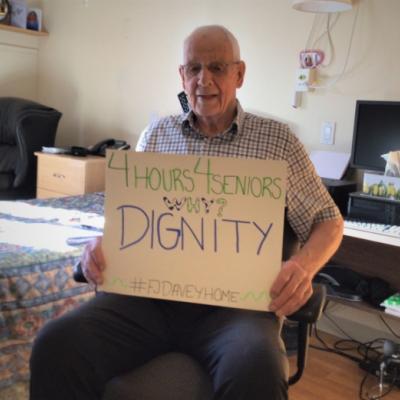

An Action Alert (AA) was developed to mobilize collective action to advocate for nursing home residents. The link to the AA, the graphic, the messaging and the hashtag #4Hours4Seniors were all shared on social media to urge others to sign and share the AA, and use the hashtag to contribute to the dialogue of the LTC crisis. The social media campaign aimed to support the goal set out in the AA – encourage as many people as possible to add their signature to urge action from key political leaders (in this case, the premier and minister of LTC).
This is a good example because it incorporates a graphic, supportive messaging, a call-to-action (the link to the AA) and a specific hashtag.




